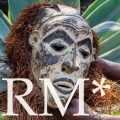[ open access after 14 October 2025 ]
Heba Abdelgawad writes:
The “Egypt” that is taught inside and outside museums tends to be a Western, monolithic construction, overly focused upon “timeless” ancient objects and obscuring from children’s education the vibrant modern-day cultures of Egypt.
This monolithic construction impacts the restitution discussion, which is dominated by the Egyptian State and Western actors.
In order to bridge the gap between past and present, and between Western countries and Egypt, new pedagogical strategies are needed.
This essay presents two case studies from the Egypt’s Dispersed Heritage project and Hands-on-Humanities Project that have attempted to address these issues, and which adopt a “cross-curricular” approach centering lived experience to bring multiple histories, learning strategies, and current perspectives to bear on ancient Egyptian museum collections.


